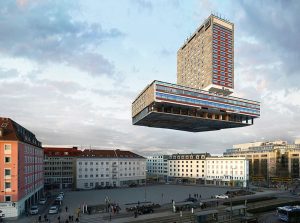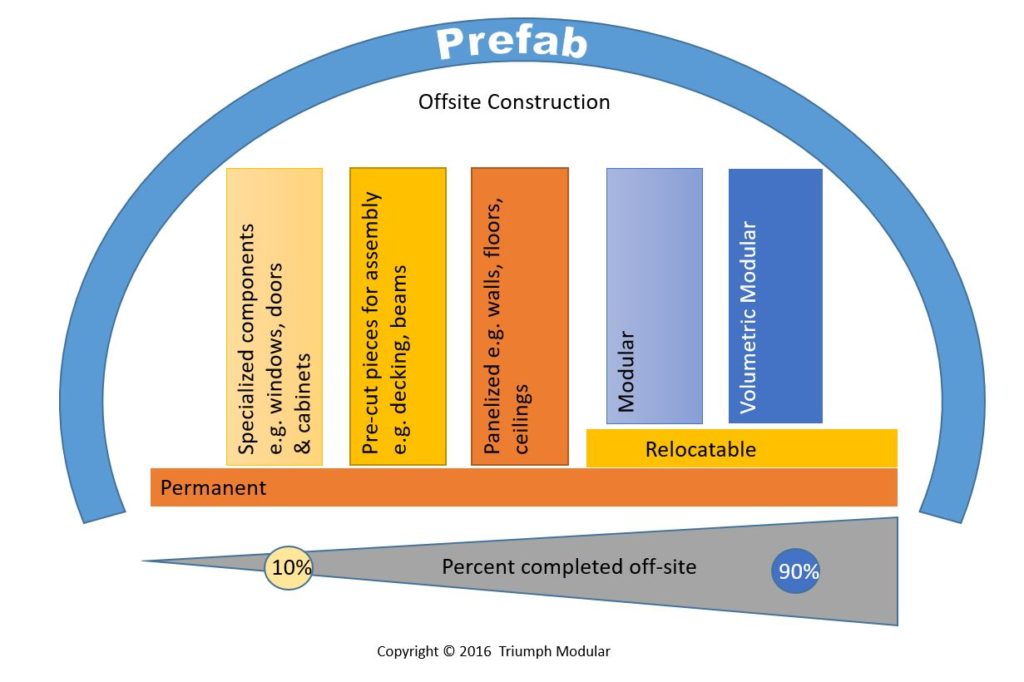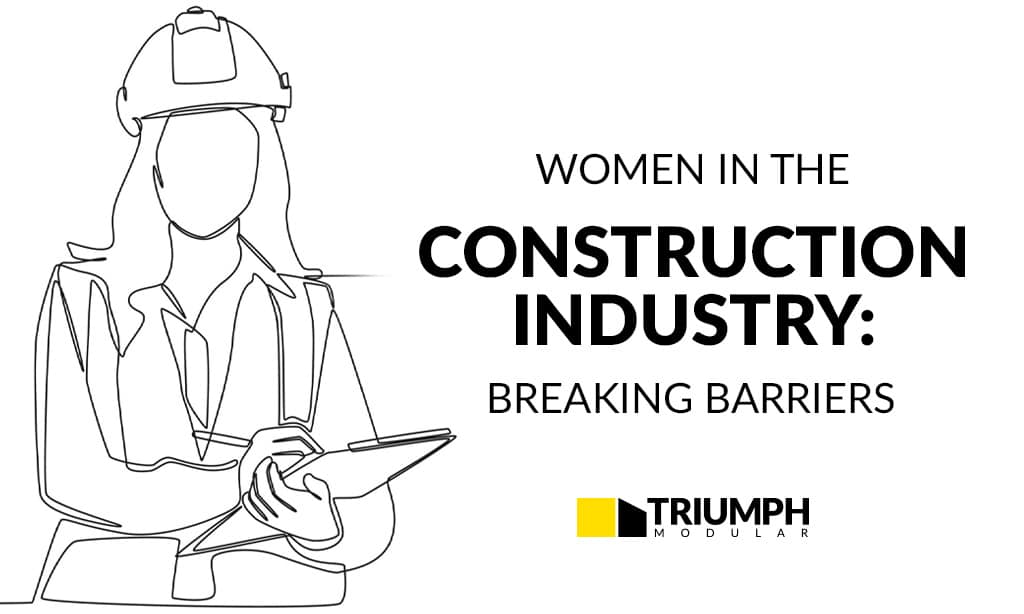How do you define “modular construction”? Ask five different people, you’re likely to get five different answers. The goal of this article is to clarify misconceptions to help you make informed decisions about what construction technique makes the most sense for your project.
Modular vs. Prefab
These terms cause a lot of confusion, and understandably so because they are often used interchangeably. It’s best to think of “prefab” as an umbrella term rather than a distinct approach. It is derived from “prefabrication” and used to refer to anything that is constructed off-site.
Every building project has some materials that arrive in a prefabricated state. For example, think about windows: a modern window is a complex assembly of dozens of pieces including cladding, muntin, sash, sill, and glass. It would be inefficient and error-prone to assemble all of these pieces on site. This realization led to the growth of Andersen and other window manufacturers early in the 20th century. You may not think of Andersen as a “prefab manufacturer” but it’s how they distinguished their business:
See the Andersen Company History timeline: “By 1935, Andersen began shipping pre-assembled windows which saved time and controlled the quality of the final product.”
After Andersen proved the efficiency and cost savings that can be achieved with offsite construction, companies like Sears, Craftsman, and Deck House innovated “kit houses” that arrived in bundles ready for assembly. Similarly, other companies provided “panelized” sections – such as roofs and floors – that made on-site assembly much quicker. These are appropriately referred to as prefab construction techniques, but they’re not modular.
Modular
The term “modular” refers to a much higher degree of prefabrication. “Modular” denotes larger units that are combined to form the complete building. Modular requires less assembly, and therefore even less site work, because each module fits together in a predefined pattern.
To help illustrate the distinction between prefab kits and modular, think of IKEA as a provider of prefabricated kit furniture. Let’s say a desk. An IKEA desk arrives at your house with hundreds of pieces and requires considerable assembly. A modular desk, on the other hand, would arrive in just a few pieces that fit together in a predefined and pretested way and assemble in just a few minutes.
Because modular buildings are comprised of more complete pieces, they are also easier to disassemble and transport to another location. This leads to the two primary types of modular construction: relocatable (also called “temporary”) and permanent. Prefabricated kit buildings and panelized construction can’t be relocated.
Volumetric Modular

And finally “volumetric modular“ is the term that we emphasize at Triumph. It’s used to refer to the most complete form of modular construction. The generally agreed-upon definition for Volumetric Modular is that more than 60% of the construction is completed offsite. We focus on volumetric modular because it creates the least disruption and requires minimal on-site labor. The building arrives in larger pieces with siding, windows, ventilation, roofing, lighting, electrical, HVAC, plumbing, etc. The large, almost complete, modules can be quickly assembled (and, when desired, moved). The term volumetric is derived from approaching the construction as the combination of geometric shapes — most often six-sided cubes — that collectively form the completed living space. The spaces can be designed to be relocated during their lifetimes — something unique to modular units however large or small.
Conclusion
It’s easy to see why people get confused. Even industry publications seem to blur the distinction between terms. For example, Construction Drive, a leading construction-related website listed “offsite” as one of its top 10 trends and described it like this:
Offsite — also known as modular or prefabricated — construction has been gaining ground as an alternative building method that offers the benefits of reduced construction time, less waste and possible cost savings. As companies struggle to staff job sites and stick to difficult schedules, many have started to turn to prefab as an option that offers more certainty.
The illustration below can help clarify the distinctions. You can see how modular fits under the broader umbrella of prefab and offsite. The graphic also shows how there is a spectrum of approaches that range from considerable online assembly required to the minimal assembly required, and how only modular construction can be relocated.
Quick Reference Glossary:
Prefab = prefabrication of building components offsite in a specialized facility.
Offsite Construction = synonym for prefab.
Modular = large modules constructed offsite that are designed to be joined together.
Traditional Construction = the most common form of construction where most work is conducted on-site.
Stick built = industry term used to refer to traditional construction involving wood or metal framing. In practice, it’s synonymous with Traditional Construction.
Kit Building = pre-cut pieces requiring considerable assembly, but minimal waste, on-site.
Temporary = a building that is moved in its entirety or easily disassembled and reassembled in another location. Synonymous with Relocatable.
Panelized = a more efficient form of construction where walls, floors and other flat components arrive in large sections that can be quickly fitted into position.
Volumetric Modular = the most complete form of modular construction using minimal on-site assembly





